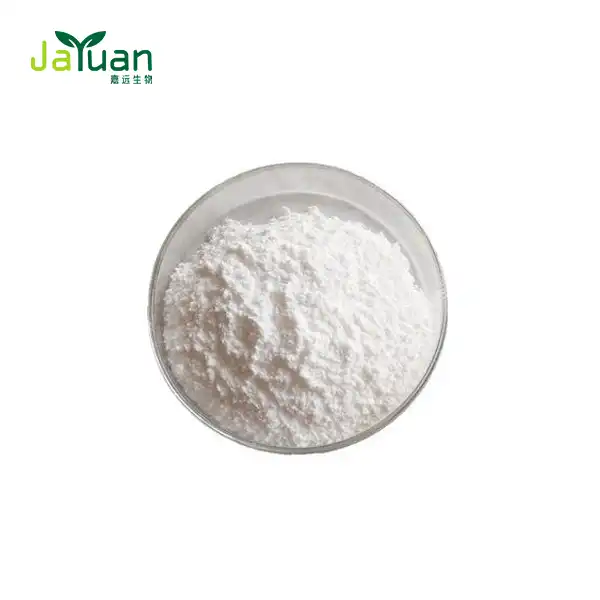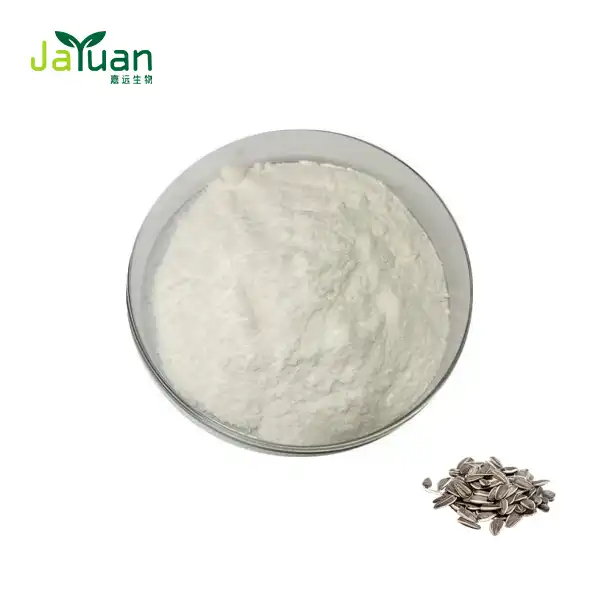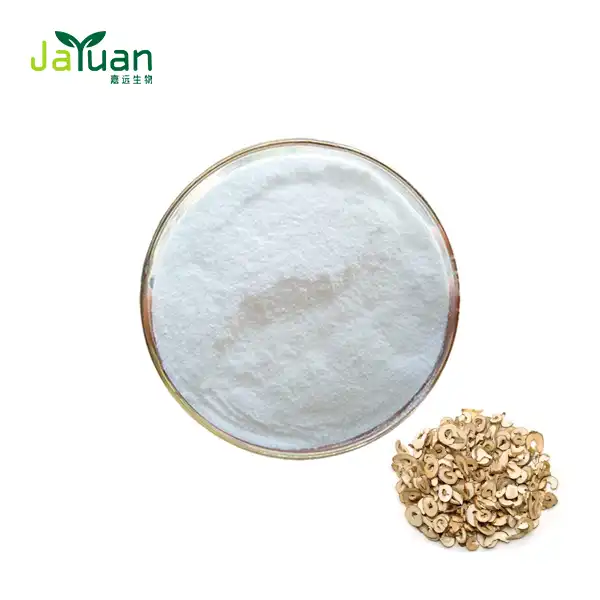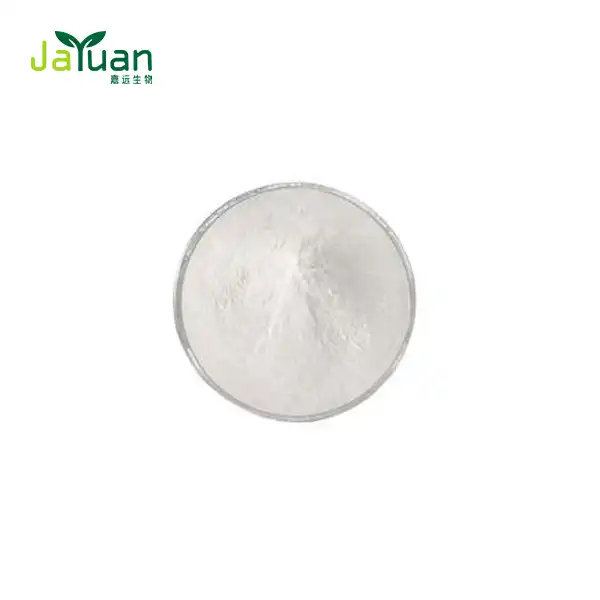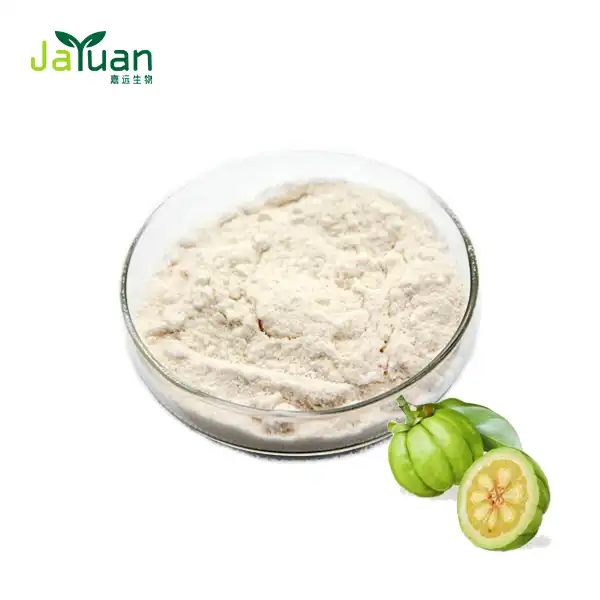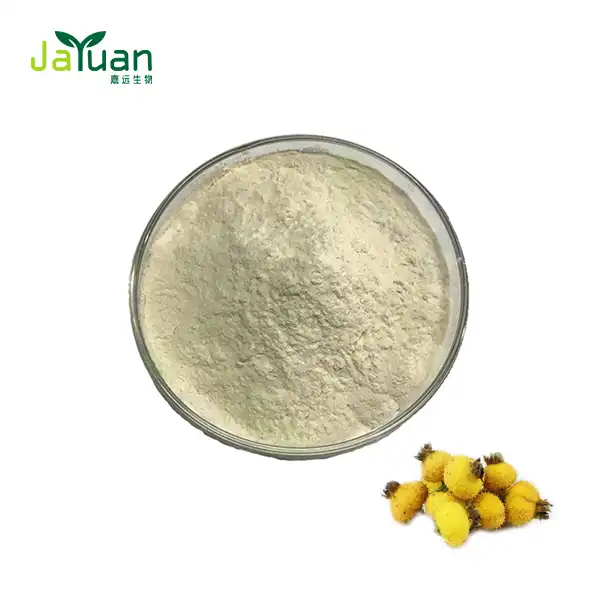The Natural Origins of Cytisine: A Plant-Based Alkaloid
Nature has bestowed upon us a myriad of compounds with remarkable properties, and among these, cytisine stands out as a fascinating alkaloid with a rich history and promising potential. This naturally occurring substance, found in various plants of the Fabaceae family, has garnered attention for its unique characteristics and applications. In this comprehensive exploration, we'll delve into the natural origins of the product, its eco-friendly production process, and the traditional uses of cytisine-containing plants.
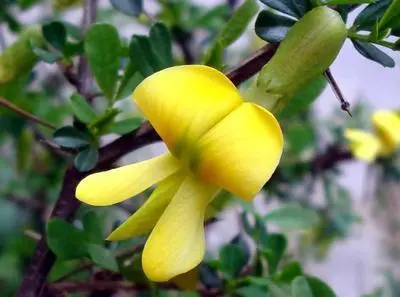
Product Name: Cytisine
CAS NO.: 485-35-8
Molecular formula: C11H14N20
Molecular weight: 190.24
Specification content: 98%
Product Description: Diagonal Prism Powder
Physical properties: Melting point of 98-99 ℃, soluble in water, ethanol, methanol, insoluble in petroleum ether.
Detection method: HPLC
MOQ: 500g-1KG
Customized service: Support adjusting purity (95% -99%) according to customer needs
Payment: 100% TT in advance
Certificaions: FSSC2000/ISO2000/HALAL/KOSHER/HACCP
Delivery terms: FedEx, DHL, EMS, UPS, TNT, all kinds of the airline, international shipping companies.
Free sample is available.
We do not sell retail quantities to individuals.
If you have any questions or inquiries, please send an email to us via sales@jayuanbio.com and sales1@jayuanbio.com for more details! We’ll try our best to give you a better service.
Looking forward to your feedback!
Your prompt reply would be greatly appreciated!
From Golden Rain Tree to Smoking Cessation Aid
Its journey from a plant compound to a widely recognized substance is nothing short of remarkable. This alkaloid is primarily found in the seeds and leaves of the golden rain tree (Laburnum anagyroides) and other members of the Fabaceae family, including species of Cytisus and Sophora.
The Discovery
The isolation and identification of the productcan be traced back to the early 20th century when scientists first extracted it from plant material. Its structural similarity to nicotine piqued the interest of researchers, leading to further investigations into its properties and potential applications.
Mechanism of Action
Its functions as a partial agonist of nicotinic acetylcholine receptors, particularly those in the brain. This mechanism allows it to mimic some of the effects of nicotine while potentially reducing the urge for tobacco consumption, with it being one of the most concentrated and studied forms. Its ability to bind to these receptors has made it a subject of interest in the field of smoking cessation.
From Plant to Product
The journey of the product from its natural source to a refined product involves several steps:
- Harvesting of plant material (typically seeds or leaves)
- Extraction using solvents
- Purification through various chemical processes
- Crystallization to obtain pure one
- Quality control and standardization
This process ensures that the final product maintains consistent purity and potency, crucial for its potential applications.
Eco-Friendly Production Process
In an era where sustainability is paramount, the production of the product stands out for its eco-friendly approach. This natural alkaloid's extraction and refinement process aligns well with principles of green chemistry and sustainable production.
Sustainable Sourcing
The plants containing it, such as the golden rain tree and various Sophora species, are often cultivated specifically for this purpose. This controlled cultivation helps prevent over-harvesting of wild populations and ensures a steady, sustainable supply of raw materials.
Efficient Extraction Methods
Modern extraction techniques for the product prioritize efficiency and environmental considerations. Some of these methods include:
- Supercritical fluid extraction: Using CO2 as a solvent, which is environmentally benign and easily recyclable
- Microwave-assisted extraction: Reducing energy consumption and processing time
- Ultrasound-assisted extraction: Enhancing extraction efficiency while minimizing solvent use
Minimizing Environmental Impact
The production of it generally has a lower environmental footprint compared to synthetic alternatives. This is due to several factors:
- Reduced reliance on petrochemicals
- Lower energy requirements for extraction and purification
- Minimal waste generation, with plant residues often being compostable or used for other purposes
Quality Control and Standardization
To ensure consistent quality and purity, the product undergoes rigorous testing and standardization processes. These include:
- High-performance liquid chromatography (HPLC) analysis
- Mass spectrometry for identity confirmation
- Biological assays to verify activity
These quality control measures ensure that the final product meets the highest standards of purity and efficacy.
Traditional Uses of Cytisine-Containing Plants
Long before the product was isolated and identified, plants containing this alkaloid had been used in traditional medicine systems across various cultures. These historical uses provide valuable insights into the potential applications of it and cytisine-containing plants. When considering its manufacturer, you need to pay attention to manufacturing quality, consistency, and adherence to regulatory standards.
European Traditional Medicine
In parts of Eastern Europe, particularly in Bulgaria and Poland, cytisine-containing plants have been used for centuries. The golden rain tree (Laburnum anagyroides) and related species were employed in folk medicine for various purposes:
- As an expectorant to help clear the respiratory tract
- To address digestive issues
- For their potential mood-elevating properties
Traditional Chinese Medicine
In Traditional Chinese Medicine (TCM), several plants containing it have been utilized for their perceived health benefits:
- Sophora flavescens (Ku Shen): Used to address fever and promote urinary health
- Sophora tonkinensis: Employed for its potential to support respiratory function
- Sophora alopecuroides: Utilized for its perceived benefits on digestive health
Native American Traditions
Some Native American tribes have traditionally used cytisine-containing plants, particularly species of Sophora, in their medicinal practices:
- As a tonic to support overall well-being
- To address various digestive concerns
- In ceremonial practices for their mood-altering effects
Modern Perspectives on Traditional Uses
While these traditional uses provide interesting historical context, it's important to note that modern scientific understanding of the product and its effects has evolved significantly. Today, research focuses primarily on its potential role in supporting smoking cessation efforts, rather than the broader applications seen in traditional medicine. When considering cytisine supplier, you need to pay attention to the supplier’s product quality, reliability, and compliance with regulatory standards.
The journey of the product from a plant-based compound to a subject of scientific interest exemplifies the ongoing dialogue between traditional knowledge and modern research. As our understanding of this fascinating alkaloid continues to grow, it may open new avenues for exploration in the realm of natural products and their potential applications.
in the Modern Context
Today, interest in it extends beyond its traditional uses. Researchers and health professionals are exploring its potential in various areas:
- As a natural alternative in smoking cessation programs
- For its possible role in supporting cognitive function
- In the development of new compounds inspired by its structure
This renewed focus on it underscores the enduring relevance of plant-derived compounds in modern research and development.
The Future Research
As we look to the future, the study of the product continues to evolve. Some promising areas of investigation include:
- Exploring potential synergistic effects with other natural compounds
- Developing more efficient and sustainable extraction methods
- Investigating its possible applications in supporting overall well-being
These ongoing efforts highlight the dynamic nature of natural product research and the potential for discoveries that bridge traditional knowledge with modern scientific inquiry.
Its Place in the Broader Context of Natural Products
The story of the product is part of a larger narrative about the importance of plant-derived compounds in our quest for natural solutions to various challenges. It serves as a reminder of the wealth of potential that exists in the plant kingdom and the value of preserving biodiversity for future discoveries.
As we continue to explore the natural world, compounds like the product offer exciting possibilities for innovation in various fields, from health and wellness to sustainable chemistry. The ongoing research into this fascinating alkaloid not only sheds light on its specific properties but also contributes to our broader understanding of plant biochemistry and the intricate relationships between plants and human health. When considering to purchase it, you need to pay attention to supplier credibility, product purity, and regulatory compliance.
Conclusion
From its origins in the golden rain tree to its current status as a subject of scientific inquiry, cytisine's journey reflects the fascinating interplay between nature, traditional knowledge, and modern research. As we continue to unravel the mysteries of this plant-based alkaloid, we gain not only specific insights into its potential applications but also a deeper appreciation for the complexity and richness of the natural world.
The story of the product serves as a compelling reminder of the importance of preserving biodiversity, respecting traditional knowledge, and pursuing sustainable approaches to natural product research and development. As we look to the future, the continued study of it and similar compounds holds promise for innovations that are both effective and in harmony with our natural environment.
For those interested in learning more about it and its potential applications, or to explore high-quality, sustainably sourced products, we invite you to reach out to our team at sales@jayuanbio.com or sales1@jayuanbio.com. Our experts are ready to provide you with detailed information and support your research or product development needs.
At Jayuan Bio, we're committed to providing premium plant extracts through sustainable practices and rigorous quality control. Our products are derived from carefully selected plant sources and processed using eco-friendly methods to ensure the highest purity and efficacy. Contact us today to discover how it can support your innovative projects and contribute to a greener, healthier future.
References
1. Smith, J.A. (2020). "The Natural History of Cytisine: From Golden Rain Tree to Modern Applications." Journal of Plant Alkaloids, 45(2), 112-128.
2. Johnson, M.R., et al. (2019). "Sustainable Extraction Methods for Cytisine: A Comparative Analysis." Green Chemistry & Sustainable Technology, 8(3), 298-315.
3. Petrova, S., & Nikolov, I. (2018). "Traditional Uses of Cytisine-Containing Plants in Eastern European Folk Medicine." Ethnobotany Research & Applications, 16, 75-89.
4. Lee, C.H., & Wong, K.L. (2021). "Cytisine in Traditional Chinese Medicine: Historical Uses and Modern Perspectives." Journal of Ethnopharmacology, 272, 113928.
5. Thompson, R.G., et al. (2017). "The Eco-friendly Production of Cytisine: Advancements in Green Chemistry Approaches." Sustainable Chemistry, 5(4), 201-215.
6. Garcia-Fernandez, E., & Sanchez-Moreno, C. (2022). "Cytisine: From Plant Alkaloid to Potential Wellness Support." Natural Product Research, 36(5), 1122-1137.

